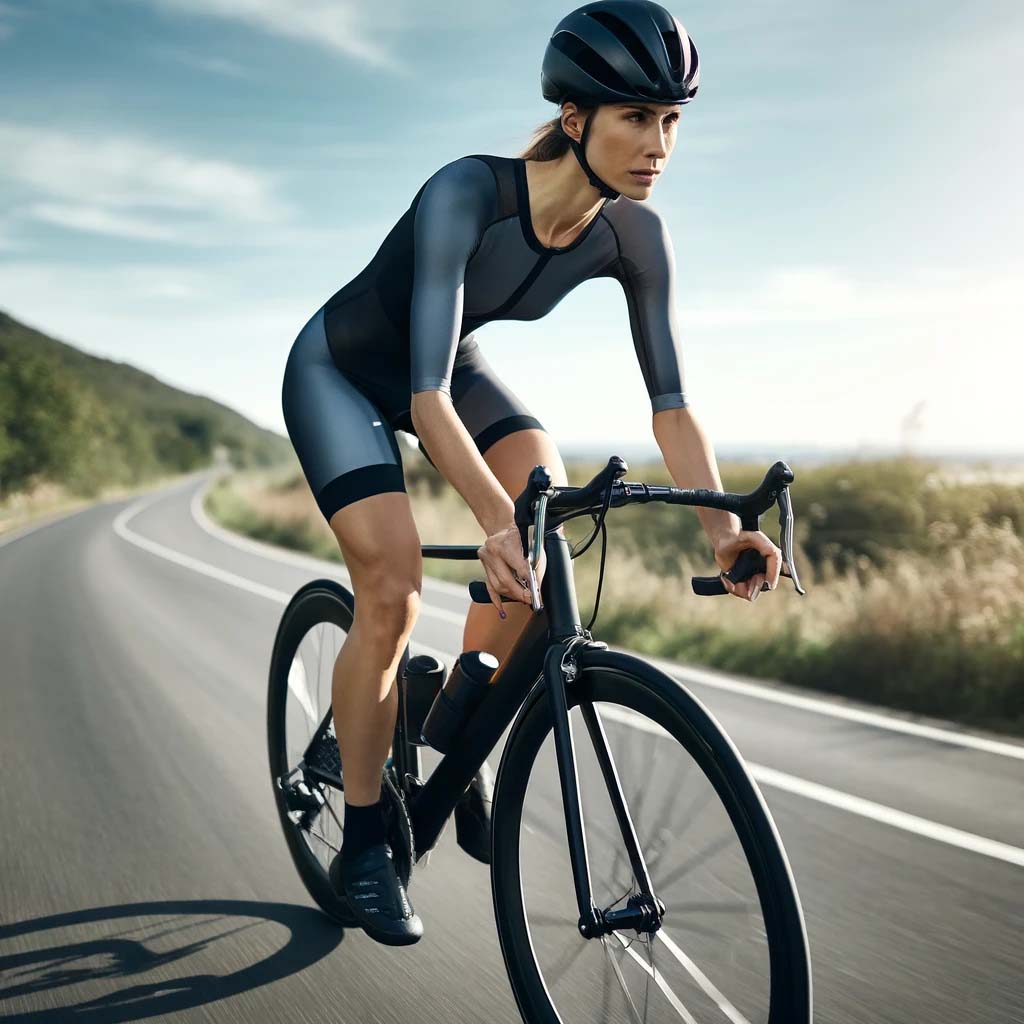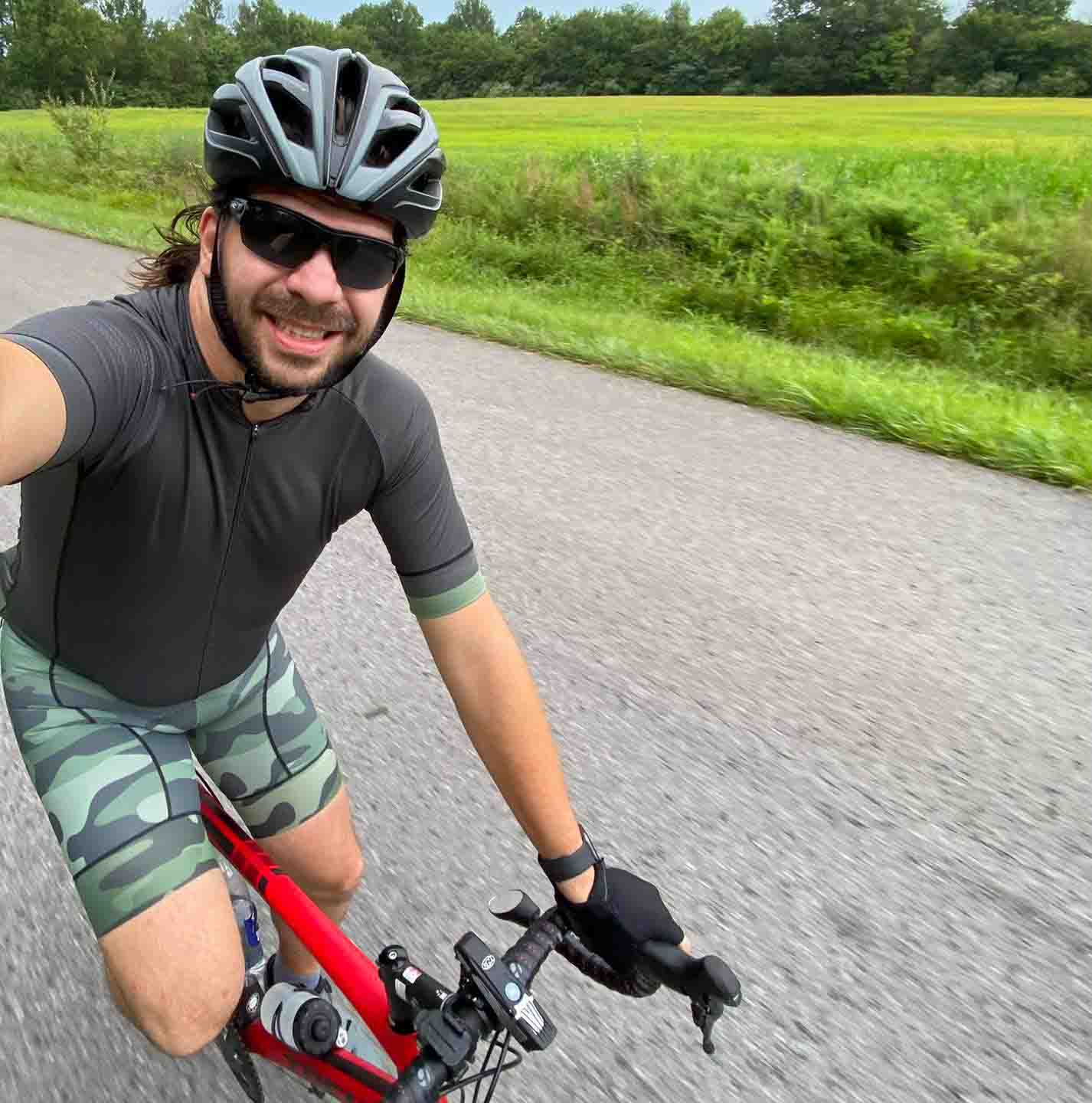How to Start a Cycling Blog
Have you ever wanted to start a cycling blog?
As a cyclist, I have a creative side, too. I love writing and blogging. I combine all three activities, and presto, this blog exists.
For me, blogging about cycling is not just a way to share my experiences, but also a journey of personal growth. It’s a process that constantly challenges me to learn more about the topics I am writing about, making me a better cyclist with each post.
Maybe blogging is your calling, too.
You don’t have to blog about beginner cycling tips, either, unless you want to. There are numerous topics within the cycling industry that you can choose from.
We’ll get more into that in the article below.
In this article, I’ll explain everything you need to know about starting a cycling blog today.
Why Start a Cycling Blog?
First of all, it’s a good thing to know what a blog actually is, just in case you don’t. It’s a website that contains pages and articles. Bloggers publish content in the form of articles to whichever posting schedule they choose. A dedicated blog gives you more control over your content versus posting somewhere else, like social media.
It’s a good idea to build a brand or business with your cycling blog. You can definitely just start a cycling blog for fun, but you can turn it into a profitable business, too. A brand is a voice and identity that is easily recognized. Ralpha is a brand. When you see Ralpha, you think of cycling apparel.
Starting a cycling blog isn’t just about sharing your passion, it’s also a fantastic way to earn a secondary income. Whether you want to make it a side gig or turn it into a full-time job, the potential for financial gain is there. And with the right strategies, your blog cannot only sustain itself but also become a profitable venture.
If you start a cycling blog about your local area, you’ll help promote cycling and cycling infrastructure in your area. I’m working on a blog where I detail my rides in Southern Illinois and the Shawnee National Forest. The blog will be helpful to folks who want to bike in my region.
Overall, when you start a cycling blog, you’re promoting the cycling community as a whole. It might make other people want to start cycling. It might encourage other cyclists to start blogging. Blogging about cycling can do many positive things.
Now that you understand the benefits of starting a cycling blog let’s proceed with the step-by-step process below.
Step 1: Plan Your Cycling Blog
The first thing you need to do to start a cycling blog is to narrow down your niche. Your niche is “cycling,” and you can decide to just post anything about cycling if you wish to. However, if you want to build a brand or business, you’ll want to narrow down your niche to better stand out. Narrowing down could be one level (i.e., cycling>Road Cycling Blog) or two levels deep (i.e., cycling>Road Cycling>Road Cycling for Women) or even deeper (i.e., Cycling/Road/Road for Women/Road Biking for Women in the 50s). The important thing is that you know enough about the niche to blog about it. Narrowing doing allows you to easily be seen as the expert on the topic you blog about.
Don’t overwhelm yourself with topics to blog about. You should choose the cornerstone content strategy, instead. This strategy consists of you choosing 1 to 3 topics within your niche or narrowing down your niche. So, if we take the “Road Biking for Women in the 50s” example again, we might choose “Cycling Nutrition,” “Cycling Fitness,” and “Cycling Training” as cornerstone content ideas. This allows you to focus more and work on being the authority on the topics you choose to write about the most. You can have unlimited sub-topics under your cornerstone content ideas, too. Again, choose the topics that you know the most about for better results.
Your next task is to select a target audience that you will be writing for. You need to know this before you blog; otherwise, who are you writing for? If we use our same narrowed-down niche above, then we know that your target audience will be “women in their 50s who are interested in cycling.” Now, you’d want to go out and find these women and research them and their needs. Find them on other blogs, social media, forums, and even during local group cycling events. Find out everything you can about them so that you know exactly what to write for them.
Choose a domain name for your blog. A domain name is your blog address. The domain name of this blog is “beginnercyclingtips.com.” When selecting a domain name, it’s important to consider a name that is easy to remember, reflects your blog’s content, and is unique. If the domain name you want isn’t available, you may need to brainstorm alternative names. Once you’ve found a suitable domain name, you can register it for about $10 to $20 a year on Name Cheap, a reliable domain registrar. If the domain you want isn’t available, it might be for sale, but the price could be more than you’re willing to spend. It’s better to find a dot com domain name that’s already available.
After you register your domain name, you’ll need to get web hosting for your blog. I recommend DreamHost for that. You can get basic shared hosting for less than $150 a year or even a hosting plan dedicated to WordPress, the blog software you’ll want to use. Once your blog is up, you’ll need to point your domain name to your web hosting. Contact the hosting support service to help you do this. Keep in mind that in addition to the domain name and hosting costs, there may be other expenses such as premium themes or plugins for your blog.
Now let’s move on to installing WordPress which is what your blog will be powered by.
Step 2: Install WordPress
WordPress is free blogging software. It powers more than 43% of websites on the internet, so chances are that many websites you visit that are not social media platforms are powered by WordPress. WordPress is open source, has a very good reputation, and is constantly updated to withstand security vulnerabilities and bugs. It’s the best and easiest way to start a cycling blog, and I recommend using it. WordPress offers a wide range of themes and plugins, making it highly customizable. It also has a user-friendly interface, making it easy for beginners to start blogging.
Downloading WordPress is very simple. Go to the Download Page and get the latest stable and supported version. With the click of a button, you’ll download the software to your computer. Most web hosting services (like DreamHost, the one I recommended) have a free one-click service where you can install WordPress from your hosting panel. If that option isn’t available, you should read the documentation on installing WordPress or even contact your web hosting service for assistance. Once the software is installed, everything gets much easier.
You’ll need to create a MySQL database for installing WordPress. This can be done easily using cPanel or Plesk hosting dashboards. Alternatively, if you use DreamHost, you can easily do this while installing WordPress using the one-click feature.
You can install WordPress easily by following the simple steps. You’ll choose your language, input the database information, choose a name for your blog, and add your contact information. Then, you’ll install it, and it’s done.
You’ll want to add a new theme and some basic plugins. WordPress offers many free themes that you can choose from. I suggest using DIVI by Elegant Themes. It’s not free, but it’s very powerful. You’ll also want some basic plugins to help you make your blog better. I recommend Akismet for spam control, Yoast for Search Engine Optimization, and Jetpack for caching and blog health. Don’t add too many plugins to your blog. Only add the ones that you know you will use. Adding too many can slow your blog down and add backdoors that could compromise your blog security.
Your next step will be to set up your new cycling blog.
Step 3: Setup Your Cycling Blog
Create a few pages after you start your cycling blog. You can create an About page that explains what your blog is about, your own information, and how you relate to the world of cycling. You can add a Contact page so that readers can get in touch with you. You can also add a Privacy page, which is a feature you can do automatically using the built-in WordPress Privacy Page creator.
Create some categories for your blog. Use these categories to create your cornerstone content topics. Then, you can create as many sub-categories as you want under them.
Go through all of your settings and change them as needed. If you’re unsure of what to change, you can leave it all as it is, and it will be fine. You’ll want to change the title and tagline to what you want and adjust the time zone to yours, at least.
Go to the Permalinks section in your settings menu. Choose “page name” as your permalink structure. This will make your page links more friendly which can help you rank better on search engines and make things easier to remember for your readers.
You can choose to have a homepage and a blog page or choose your homepage to be your blog page. Either way, you can adjust this in your settings.
And that’s how you setup your new cycling blog. That was pretty easy, wasn’t it?
Step 4: Create Your Cycling Content
When writing your blog posts, you should use a Word Processor for your initial content creation. You can use Google Docs, for example, or even Microsoft Word. I use Microsoft Word myself. This will make it easier to write and help you with your grammar and spelling mistakes. We all make them, too!
I recommend you use Grammarly to help you with your grammar and spelling mistakes. There are even features built with artificial intelligence that allow you to make your sentences more impactful. The free version of Grammarly is great, but the paid version is even better. You can even integrate Grammarly into your favorite Word Processor and use it from there. I have mine integrated with Microsoft Word, and it was very easy to do.
Earlier in the blog, I recommended you install Yoast for search engine optimization (SEO), which is free but has an even better-paid version. Use this to audit each post you write to help you optimize for SEO. This will help you get your content on the first page of Google. Learn more about keyword research and keyword placement. Mastering SEO is always a good idea for new bloggers.
As you continue to write and publish new blog posts, try to interlink existing posts with other posts. For example, if you write about “cycling nutrition” in one post, add it as a relevant link to your upcoming “cycling training” post. Interlink your posts together so that you can get more readers and traffic hits. Make sure you add relevant external links, too. Just make sure the information on the websites is trustworthy and related to your content.
Try to write as many posts as possible before you start your blog. It’s better to start with a lot of content. You can schedule the posts using an easy built-in scheduling feature on WordPress to post once a week or a few times a week. This will help you stay ahead of the blogging game and stay consistent. It’s important to be consistent as a blogger. It’s also important not to overwhelm yourself by posting too much or racing to meet deadlines.
Now let’s move on to the content marketing and monetization side of blogging which is the last step on how to start a cycling blog.
Step 5: Marketing and Monetizing
It’s important to promote your blog. When you promote your blog, other cyclists and your target audience will know it exists. You can’t just create a blog and automatically get readers. That has never been the case. That’s not how the internet works. You have to do some work to market your blog and its content. You can pay for this, but you can also do everything for free. I suggest taking the free route, at least until you start making money.
Guest blogging is one of the best ways to promote your cycling blog. Start by befriending other cycling bloggers. Get to know them. Comment on all their posts. Engage with them. Then ask if you can write for them. Make sure your guest post is the best post possible as if you’re writing for your own blog. If you get rejected, don’t worry about it. Just keep trying with other cycling blogs until you get a yes. You should also allow other cycling bloggers to write on your blog as well. You might be able to do an exchange with them.
You should be on social media, too. At least get on it for your cycling blog promotion. Research each popular platform to determine if your audience is using it. Choose the more active platforms. Use something like Buffer to schedule a few posts a day to help promote your blog. Engage often on the platforms and work on promoting your blog as a brand or business. A lot of your blog traffic will likely come from social media.
When you start a cycling blog, it will eventually cost money to keep running, plus your domain and hosting costs are also added. It’s a good idea to try to make money. You can do this by asking for donations, using ad networks, selling sponsored posts, or even offering a product or service. The best way to make the most money with your cycling blog is to have multiple streams of income by choosing many money-making activities.
As a blogger, there are some important things to consider. Never spam your blog. It can get you banned from Google and even your web hosting service. If you make money with your blog, keep track of what you make, as you will likely have to pay taxes on it eventually. Don’t use Black Hat SEO tactics to make your blog do better on search engines because it’s easy to get caught and banned in the process. Be ethical, and never lie to your audience.
And that completes the easy steps on how to start a cycling blog. It really is that simple.
Get More Blogging Help
After you start a cycling blog, you’ll likely need more help with blogging as you get deeper into it. I’m here for you.
Check out my other blog called Serious Bloggers. It’s all about blogging tips. I post a very value-packed, resourceful article each week, all about blogging. I have many other articles on the blog you to enjoy as well. I even offer consulting if you want to take your blogging education even further.
I also invite you to join Blogging Collective, my FREE online community of bloggers. The community is all about bloggers helping bloggers get better at blogging. Enjoy daily discussions and articles, and you can even create your own topics if you need more help.
Finals Thoughts
I hope you’ve enjoyed this article about starting a cycling blog. Blogging is a really fun thing to do, and starting a cycling blog is a great way to get more into cycling.
Please share this article with other cyclists that you think would make great cycling bloggers.
If you want to support me in taking the time to write this article, please consider giving me a one-time donation.
I also encourage you to subscribe to my free cycling newsletter, which I’ll be sending out very soon.
About Shawn Gossman
Shawn Gossman is the author of this post and founder of the Beginner Cycling Tips Blog.
Shawn has been an avid cyclist for around 12 years. He road, gravel, mountain, and trail bikes. He likes adventuring more than racing.





